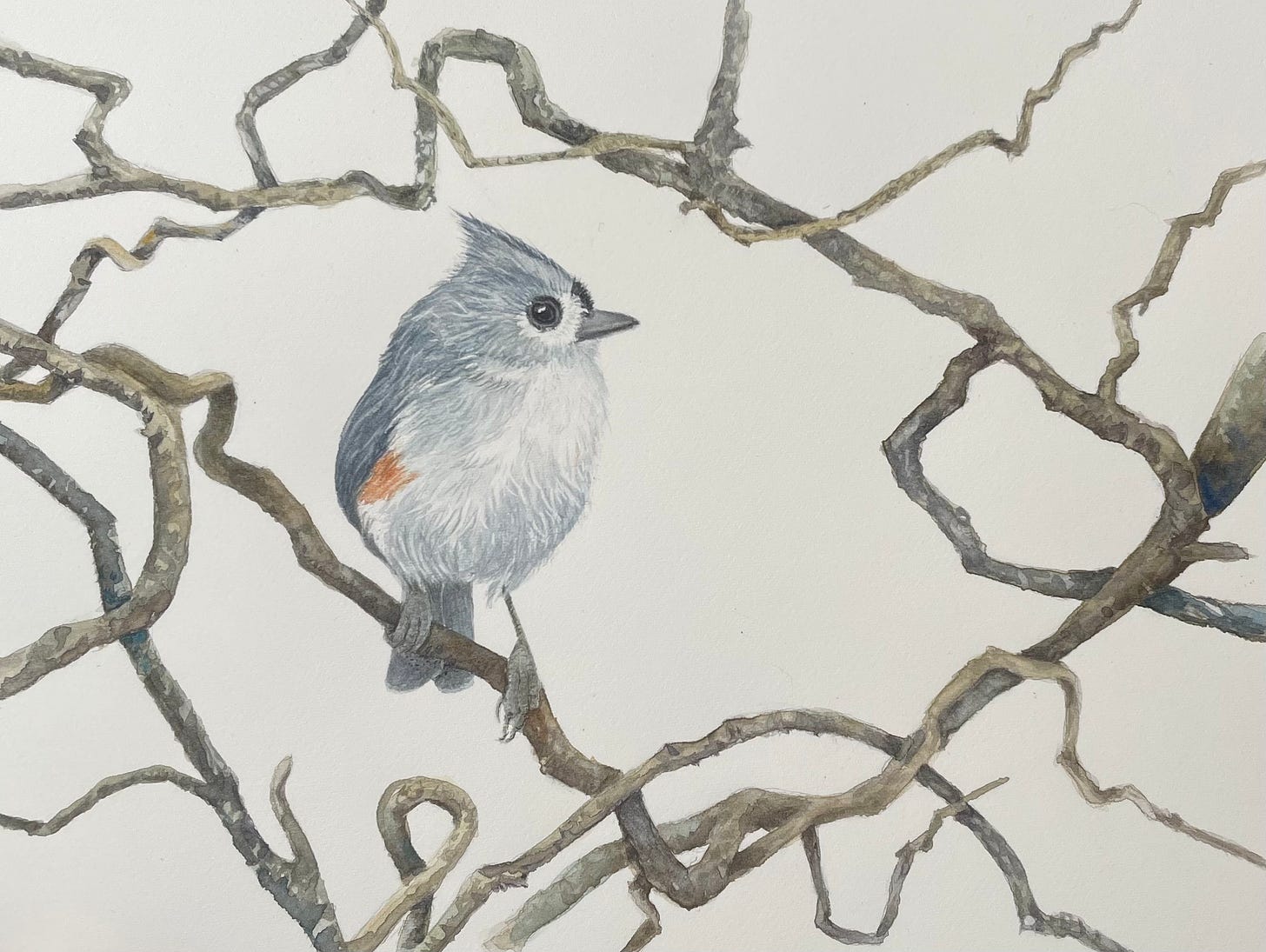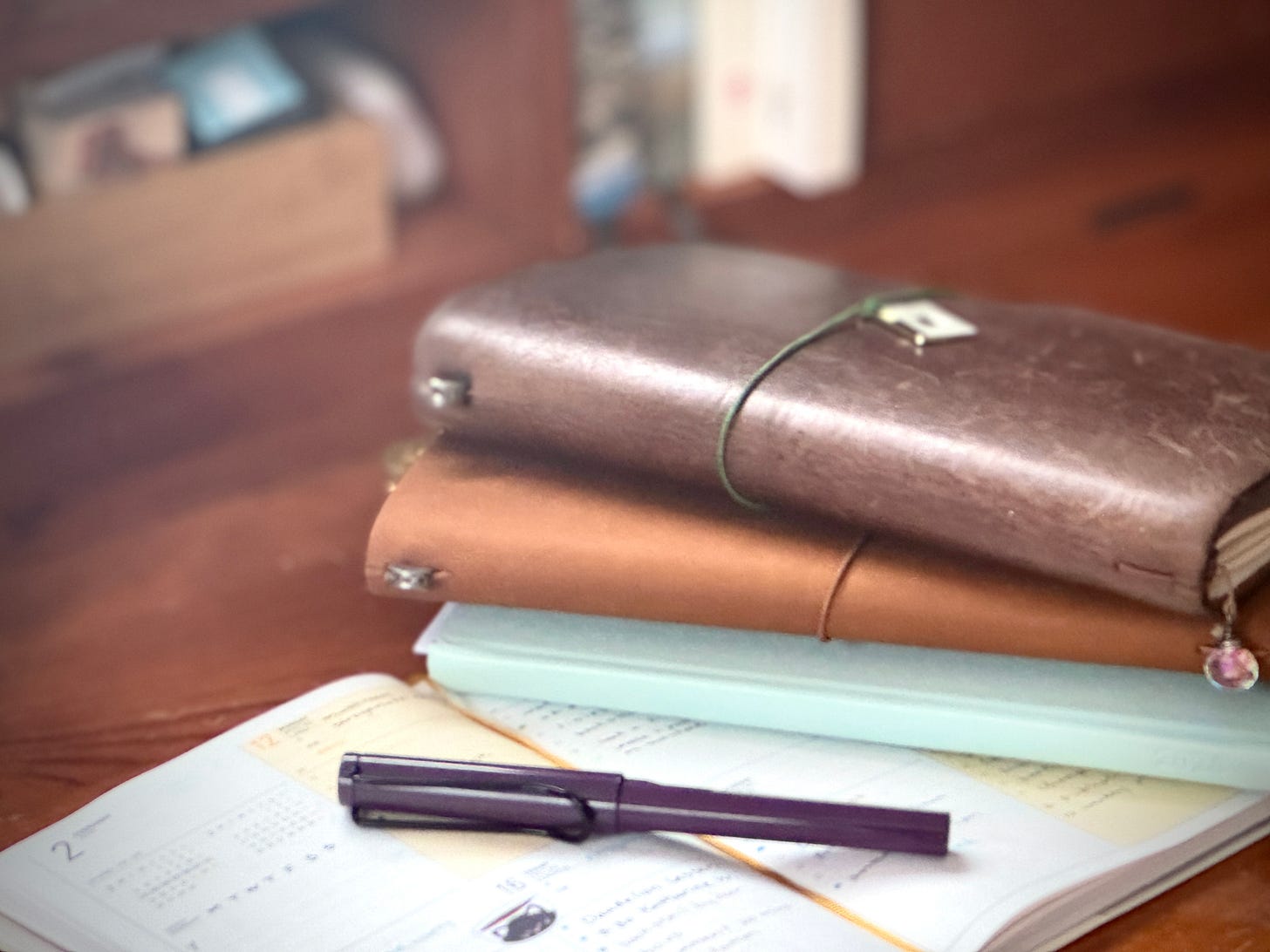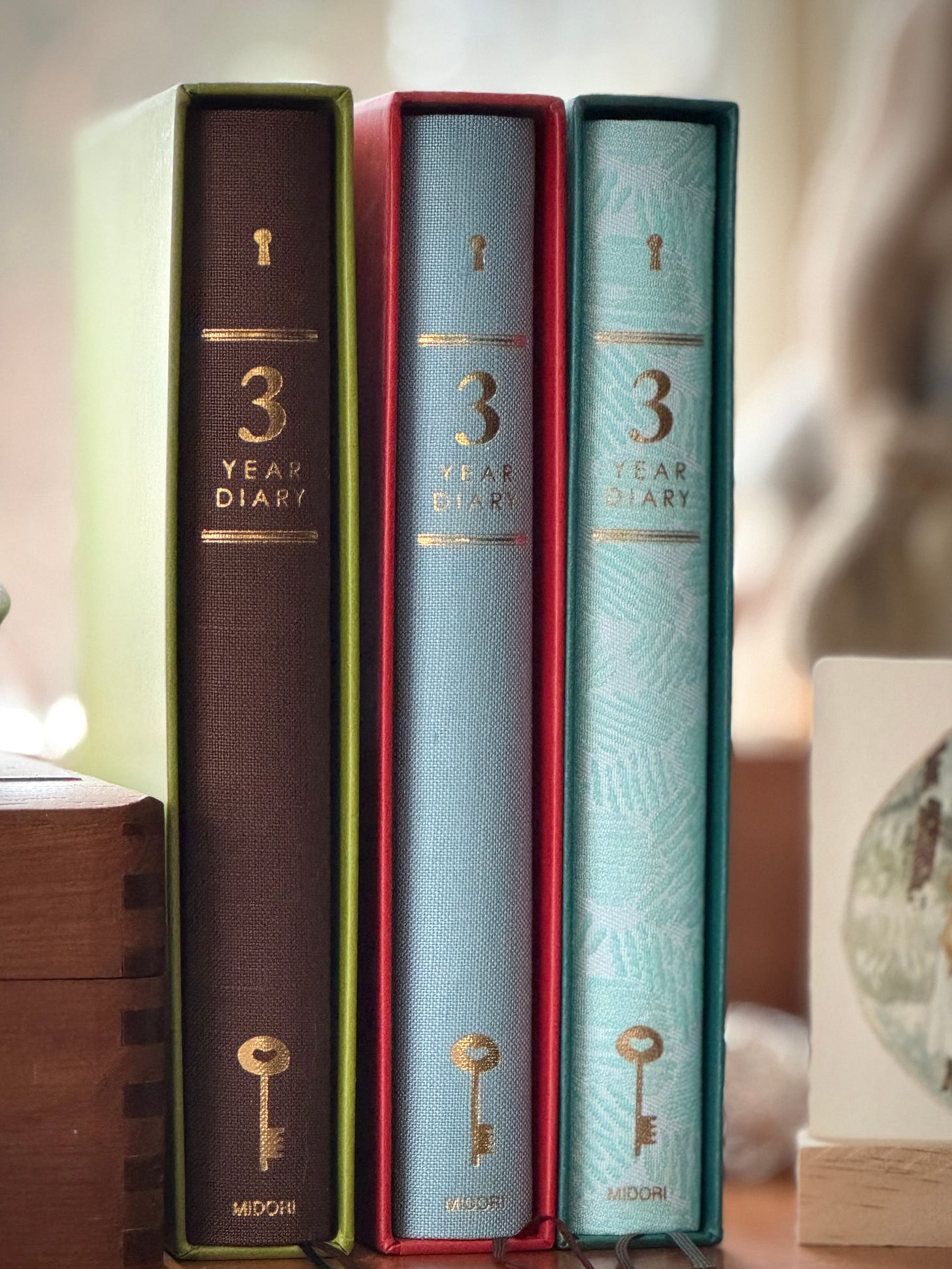
Let’s begin with a disclaimer: I am no one to give advice on this topic. Once, not terribly long ago, my screen time summary for the week could average at ten or more hours a day. Yes, I do my work from my phone, but I also rested and escaped on my phone. Doomscrolling was a favourite pastime. The things I am sharing in this essay are nothing profound, but they have helped me bring that screen time statistic down to an average of two hours and 51 minutes a day, as of this past week. The progress has been slow, the setbacks notable, but nevertheless I feel like I am on a solid path to reclaiming my pre-digital brain. Maybe what I am about to share will be helpful to another soul, too. At the least, I hope it opens up a conversation here, in the comments below.
Trying to reclaim an analog life that can hold its own balance in an era dominated by the wonders of the digital is a daily effort that can feel like Sisyphus straining to force his boulder up that never-ending hill. It is worth it. For the well-being of my human brain and spirit, it is worth it. I know that continuous exposure to screens and the rapid and vast pace of digital information brings me sensory overload, and whether I admit it or not it has a profound effect on my well-being. Those quick bytes of information, whether pleasant or tragic, affect my ability to concentrate for more than moments at a time, and before beginning my analog journey I saw a measurable decline in my ability to process information efficiently enough to have any kind of memory retention. While I must continue to live and work with the assistance of digital tools, it has been my commitment to my analog activities that has helped me tangibly experience the real need for necessary breaks and has offered me respite from the stress and anxiety that information overload was putting on my shoulders, day in and day out. It has also increased my attention span and my memory retention. This has been a win for my productivity, my creativity, and for my mental health.
So what are these simple analogue activities? Enter the magic of the paper notebook.
More than anything else, putting an actual pen to paper instead typing on a keyboard has been the most helpful thing for my recovering brain. After that, I would say my ability to read longer works online and in physical books, reading the daily newspaper instead of watching the news online (yes, PAPER, not digital) has been in second place, but it took some time to get there. My notebooks, though, are the main event, the touchstones of my every day. Let’s take a look at each of them.
1. Planner: All of my scheduling and planning is now done in a physical notebook and I find that having that book open on my desk at all times has meant not forgetting appointments or tasks as easily as when I was using digital calendars. Because of this, I believe I have been able to use my time more creatively and efficiently. It’s also so much easier to move a post-it-note or erase and rewrite a task list than it is to pull my phone out and manipulate text with thumbs.
2. First Draft Notebook: All of my first drafts for any writing that I do are written by hand in a notebook. This activity alone has made a tremendous difference in my ability to think on paper. Writing by hand has a slower pace and leaves a trail of cross-outs that remain as a visible map of my thought process. It slows me down when every word is deliberate because my hands cannot write as fast as my fingers can type. Once the first draft is done, the act of entering it into my word processor, word by word, line by line, is a way to revisit and consider the entire flow of the piece and is an excellent first edit. Then, the tools of a good word processor really shine and help me quickly move forward to a finished piece of writing.
3. Commonplace (Woolgathering) Book: This notebook is my catchall for the words and thoughts of others that I come across in my research and readings—things I do not want to forget. The act of transcribing them into my notebook sentence by sentence helps my brain absorb and process the ideas within the words. I remember my pre-computer college days (early ‘80s) when I would take copious notes on paper during class and then transcribe them into another notebook each night. Transcribing is a sure-fire way to embed things more clearly into those elusive memory files of the brain. My commonplace book is also a physical record of what I was interested in and consuming in a certain period of time and also becomes an index of sorts that I can pull from when I need inspiration or want to follow a trail of breadcrumbs deeper into a certain topic I had documented.
4. My Brain Dump: This is where the notebook really shines. I have one I call my second brain and it goes everywhere with me. It’s full of discombobulated thoughts, ideas, feelings, lists, appointments, snippets I need to remember and would otherwise surely forget. It’s messy and cluttered, and it’s also where I turn when I am tempted to pick up my phone and mindlessly scroll. It’s a soft place to fall and to pour out my anxiety or worry, and then simply turn the page and move on. At the end of each day I look through what has transpired on the pages and if there is anything important that needs to be recorded someplace else, I add it to the appropriate notebook. These brain dumps get recycled once the book is complete. All of my other notebooks are archived in boxes.
5. Morning Pages: Heralded by many and introduced by Julia Cameron in her book The Artist’s Way, morning pages have been a part of my early hours for almost twenty years. Every morning without fail I sit down with coffee and a pen, open my notebook and let my thoughts spill out onto the page. Sometimes the thoughts are anticipatory of the day ahead, sometimes a reflection on something that has been on my mind over night—and often they are uninspired and quite pedantic. Now and then there is the rare revelation that makes every boring page worthwhile. Mostly, they are daily calisthenics for my writing brain, simply getting thoughts to move from the brain to the arm, out through the hand to the pen and onto paper, and for that reason alone I will never let this habit go.
6. Letters to My Grandchildren: Every night before I go to sleep I spend some time writing a few sentences to each of my three grandchildren. They all have their own book, an heirloom quality, fabric-covered, hardback three-year diary that each sits in its own slipcase. My grandchildren are very young, and I hope that when they become adults they will each have several volumes of daily musings from my heart to theirs, a record of one woman who loves them sifting through small daily happenings and bigger apparent truths, a history of sorts. In this digital age we have lost something of great value in the paper trail of correspondence that our ancestors left behind in their letters and diaries. I want my grandchildren and their grandchildren to have this kind of history that they can hold in their hands. It’s probably one of the most important things I do.
That’s a lot notebooks. I say it’s probably not enough. These beautiful gatherings of words on paper require more from me—but the slowness, and the deliberate physical interaction on the tactile page with the glistening of a specially-chosen ink flowing from a beautiful fountain pen brings me immense pleasure as well. It brings a measure of beauty to my life every single day, during a time where the daily news can bring so much ugliness and despair.
I have other analogue routines and rituals: drawing, painting, exercising, knitting, slow-stitching, cooking, watching the natural world around me intricately cycle through each season, and reading good literature, among them. All of these engage my senses and create pathways for my brain through the tangible world that digital tools cannot provide. These things stimulate my creativity and bring such a calming and stable sense of equanimity to my life. As a teacher of the creative practice I often preach about the importance of slow and deliberate work that can almost take on the act of meditation. Unplugging and being present with simply a pencil, paper and small natural object to document with your own mark-making is the foundation of every other practice I teach. I call it seeing/drawing, for that is exactly what it is, and it is my own technique developed from years of studying the techniques and philosophies of those I consider my own teachers: John Ruskin, Frederick Franck and Andrew Wyeth. I will write more on this one day, but for now, HERE is a video I created as a basic introduction to the practice. If you poke around my YouTube channel you will find many more. I hope you will give it a try and then let me know how it felt.
Making time for analog activities in my day has become my balance point. It’s not about abandoning or shunning the digital tools that have come into our lives over the past decade or two, but about keeping them in check—keeping them as tools in a well-lived, analogue life. It doesn’t have to be one at the expense of the other, but instead a harmony between the two. Since making these simple analogue activities a priority in my life I have seen such a difference in my attention span and my ability to digest and process what I encounter in a less-stressful way. I will keep writing about these things now and then (on this amazing digital platform) as I continue to learn and evolve in my own practices. For now, how do you make analog a priority while still embracing the wonders of digital technology? I would love to know. Or, are you someone still navigating your way out of digital overwhelm? Let’s talk about it. It matters to the health of each of us, and to our society as a whole.







Just a week or so ago, I asked myself “why am I pissing my time away?” Awake before dawn, coffee, glass of water and my iPhone at the ready, then in a flash the morning is half gone. Instagram, Facebook, Substack and emails, all taking away time. Some is great. I love how Substack is developing into beautiful storytelling. Some is just mindless and fake. I mean honestly, how can using the sharp end of a bottle opener to open cans of tomato sauce be a hack?! It’s just how it’s done so you don’t spill. 🤦🏻♀️
I love using my different notebooks and planners. I am not good at keeping a daily habit, but when I have something to write, I do. And I’m glad I have nice supplies to use.
I value the connections I’ve made online and it’s hard to balance present life with virtual sometimes. My world is pretty quiet now that I’m retired and having other people from around the globe to interact with is so exciting and unique. Being analog in a digital world is not retro or old fashioned, it’s being human. I love this post and the chance to respond. 💕💕💕
Lovely. The notebooks and planners came back into my life last year. What helps me be more consistent is letting go of perfection. Allowing myself to be messy no matter which planner notebook I am in. I have a larger daily planner where I journal, write and draw, each day, a weekly planner for health information, a composition dump notebook, and an daily art journal. I off and on have morning pages journals. I have a few more journals where I document my artistic thoughts ideas and journey as well.
I have been keeping a digital folder for stories about each of my children and grandchild as they occur to me. Knowing as a mom, I am a keeper of their story, I want them to have those stories about their early lives that are hard for them to remember. But love your idea of a small diary to keep thoughts and stories for them analog to let them know I think of them daily. Digital has a place for sure, but I miss my calm brain that used to be settled and calm and retain everything. I miss lulls in my days, to ponder things and even being bored.
We don't seem to value that anymore, we fill our whole day with our phones or laptops. Most of my friendships are online now as everyone is too busy and I have met people I would have never known otherwise. However, I do miss a time where there was not so much online to ensnare our minds and people got together more because there wasn't this instant, constant, access to everything, but as each of us steps away little by little, that opens up more and more space for us to live our lives not behind screens. I want my brain to not always stroll back to should I photo this moment to share? I just want to enjoy my moments.